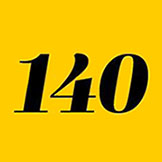
iniature Story (www.miniaturestory.org) is a social-media project that shares 140-character stories that you can read in just a few seconds and write almost as quickly.

Anealla Safdar created Miniature Story after she quit her job as a reporter to pursue an MA in creative writing prose fiction at the University of East Anglia in Norwich, England. At that time, her interest in social media became more imaginary and creative, so she wanted to involve her new classmates in a project that showed social media wasn’t just a corporate tool: it could be fun and give all individuals a creative voice.
Community
Since its creation in late 2013, Miniature Story has grown to create communities of readers and writers from across the globe. Anealla is in regular contact with many contributors, so she feels like she knows them well, yet they’ve never met in person. Other Miniature Story writers have joined her at local spoken word events.
Miniature Story’s inclusive community is one of its strengths. “I accept stories from writers at all levels,” said Anealla. “As a writer, one has to put up with enough rejection, and I wanted to avoid this negative experience.” If she receives a story that “doesn’t quite make the mark,” Anealla works with the author to edit the story and to try something new that will work.

“As a writer, one has to put up with enough rejection, and I wanted to avoid this negative experience.”
(Photo: Anealla Safdar)
Challenge
It’s a challenge for writers at all levels to write a full story—the situation, complication, and resolution—in only 140–characters, but it’s also the job of all writers to write concisely, Anealla says. Even those who prefer an ornate, convoluted prose style spend a lot of time “selecting words, casting others aside.”
Miniature Story contributor Ali Znaidi says the process of choosing the right word for a story is the most challenging, yet most enjoyable, part of writing 140–character stories: “Lips and tongue never stop uttering words. The pleasure of writing miniature is to pluck that special rose from the remarkably crude gardens of speech.”
Likewise, contributor Alex Valente says this process is helpful for identifying what is really important in a story: “It’s a useful tool to get down to the bare bones of a story. You can play with expectations, suggest what the context might be by simply giving the raw ingredients in some order and letting the readers deal with the rest.”
Connections
Contributors of Miniature Story have seen how the special attention to detail they’ve practiced by writing miniature stories has translated into their long-form pieces of writing. Alex says he notices a lot more editing goes into his stories now to try “to get the same effects of a shorter piece with a longer narrative form.”
By focusing on the detail and structure of the story, writing becomes more about the process than the product. Anealla says she has a renewed appreciation for odd details: “Objects, colors, names, types of food—in such a short space, those are memorable things, especially when combined with drama.”
Writing miniature stories is also great practice for avoiding unnecessary words and details in longer works and eliminating other wordiness to create more effective prose. Writing concisely is a skill that requires ongoing practice, but it’s not necessarily relying on the fewest words, Ali cautions. It’s about using the most powerful ones and avoiding vagueness.
“There are certainly a few common themes that come up, such as death and love, but I never tire of them. It’s the way you tell it.”
Compilation and Collaboration
Examples of Miniature Stories:
This form of writing doesn’t stop with sharing individual miniature stories. For example, poet George Szirtes created a series of miniature stories titled “Fabulous Creatures” for the project’s one–year anniversary.
Also, a group of Miniature Story contributors compiled seven interlinking stories to create “A Reunion.” Anealla believes compilation and collaborative projects like these show the potential of the medium and would love to publish more of them.
Compose
For those of you who would like to challenge yourself and freshen up your writing skills, try writing a miniature story or two.
If you’re not sure how to start, take Alex’s advice: “Start writing, stop, and cut. Repeat. Discard. Repeat. The good thing about short and micro fiction is that you’re not going to lose much, and if an idea just isn’t going to work, you’re not going to spend days writing it all out.”
After you’ve written it, send it to www.miniaturestory.org to share it with the world. Editor Anealla is always looking for new writers.
“There are certainly a few common themes that come up, such as death and love, but I never tire of them. It’s the way you tell it. The unexpected stories are particularly delightful, the ones you could never have predicted,” said Anealla. “I’m always delighted and amazed by what Miniature Story writers can do in such little space.”

Anne Greenawalt is a writer, an athlete, a doctoral student, and an educator. She combines these interests by maintaining an occasional blog called Thigh Flashers: a bricolage of journal entries, memoir snippets, interviews, training logs, and profiles of competitive female athletes.
-----
Enjoyed this article? Check out these related articles on WOW!:
Not a Flash in the Pan: Flash Fiction Storytelling
The Top Two Tips for Writing Flash Fiction